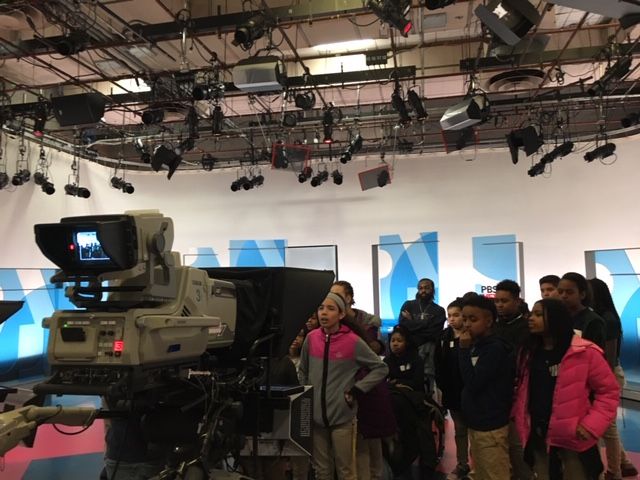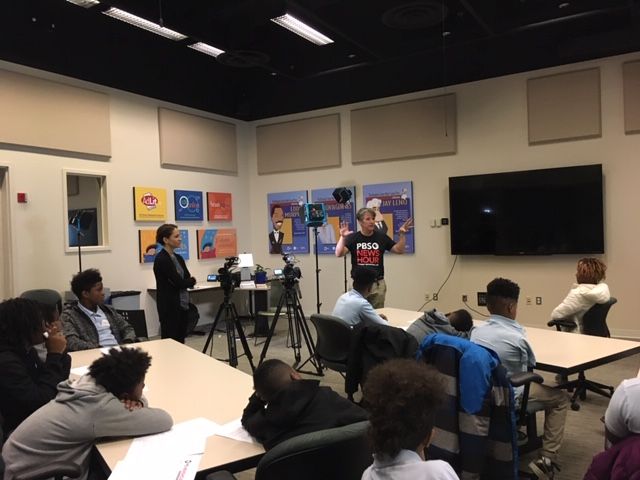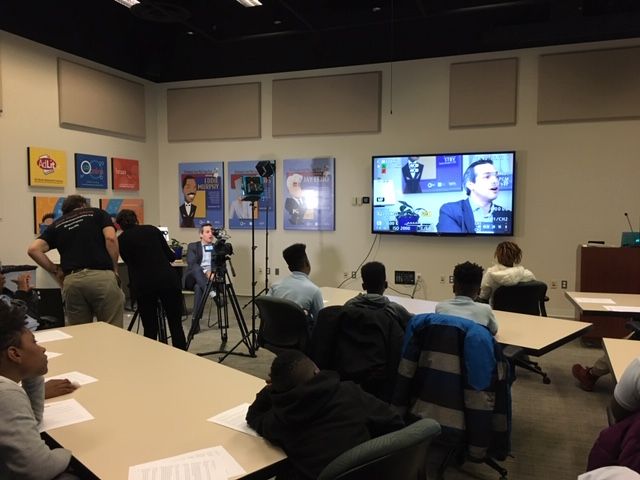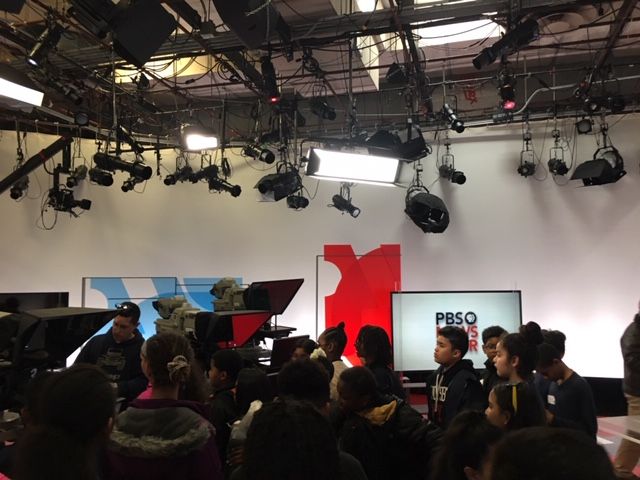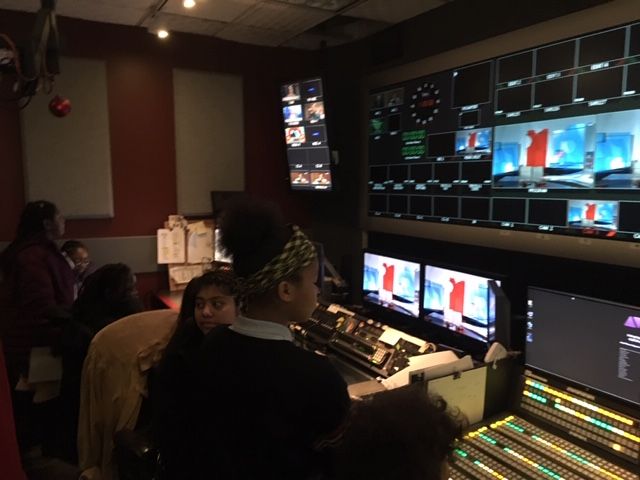The WETA offices and studios in Arlington, Virginia opened their doors to the Pulitzer Center, McKinley Middle School and Takoma Park Education Campus on February 6th for an in-depth look at how news is produced for television. Prior to their arrival at the WETA studio, students from both schools had received a pre-visit lesson highlighting all the work that goes into reporting and producing taped segments for PBS NewsHour. They learned about the differences between A-roll and B-roll, what a journalist does and how producers collaborate with reporters to visualize research. They then explored an episode of the Peabody award-winning NewsHour series “Inside Russia,” which was supported by the Center, to evaluate how producer Zach Fannin and special correspondent Nick Schifrin applied visual storytelling skills to their exploration of how different communities in Russia view President Vladimir Putin. The students would later be joined by Schifrin at the WETA offices.
The day at WETA began with a presentation by Pulitzer Center’s Senior Education Manager Fareed Mostoufi, who reintroduced visual storytelling concepts from the pre-field trip lesson and introduced Bridget Ganske and Bill Swift from PBS NewsHour’s Student Reporting Labs. To begin their deep dive into all things news, the students then spoke directly with Schifrin about how and why he became a journalist, the importance of asking good questions and the challenge of finding good stories. Schifrin emphasized the importance of telling stories that most people may not have heard of and being willing to ask questions that might make people uncomfortable. Following this discussion one student noted that she, “...would love to go to Russia and see this for myself." After learning the interviewer side of the story, students worked with Switft to learn how to actually set up and film an interview. After learning about these two essential elements of a broadcast news story, students were already expanding their understanding of possibile careers in news. One enthusiastic student from each school had the opportunity to be interviewed by Schifrin. Questions included, “What are your hobbies?” and "What do you want people to know about your community?”
Observing the set up and short interview allowed the two student volunteers who followed to practice their own interview skills. As one volunteer conducted the interview while the another held the camera, all students could see how to apply the abstract concepts discussed up to this point.
While interview practice was the highlight of the day for many students, others were most engaged while touring the WETA studios. Beginning in the control room and ending on the set of “Washington Week,” students learned about the myriad of jobs that go into producing any given piece of television news. This realization can help open up a new understanding of potential careers in media. Speaking to experts in the control room, as well as lighting designers on the NewsHour set, helped highlight how those with more technical, or more artistic inclinations could find unique and interesting work in the world of news.
Pulitzer Center staff returned to classrooms after the field trip to support students in using what they had learned about visual storytelling to develop plans for taped segments depicting the stories of their schools and communities. At Takoma Education Campus, one class planned the research and interviews that they would need for a segment on the impacts of police using violence against protestors in DC. They decided that they would need to seek out interviews with protesters and police officers. They would also need to find footage of protests, and shoot their own establishing and action shots to support their interviews. Through this workshop, students were introduced to a whole world of potential careers and methods for storytelling. Hopefully one day soon, the world will see them telling their own stories on a much larger scale.
This field trip was supported by the DC Commission on the Arts and Humanities, which receives support from the National Endowment for the Arts. For more information on opportunities to connect students to underreported stories and the journalists who cover them, contact the Pulitzer Center education team by emailing [email protected].
